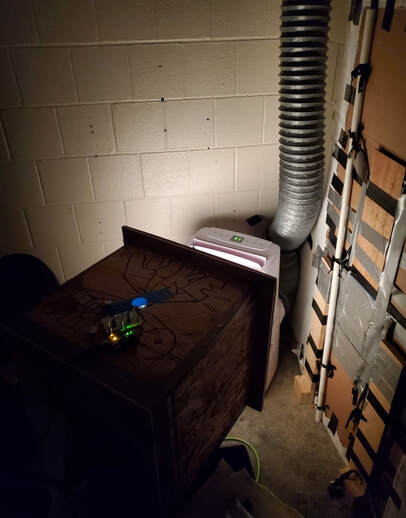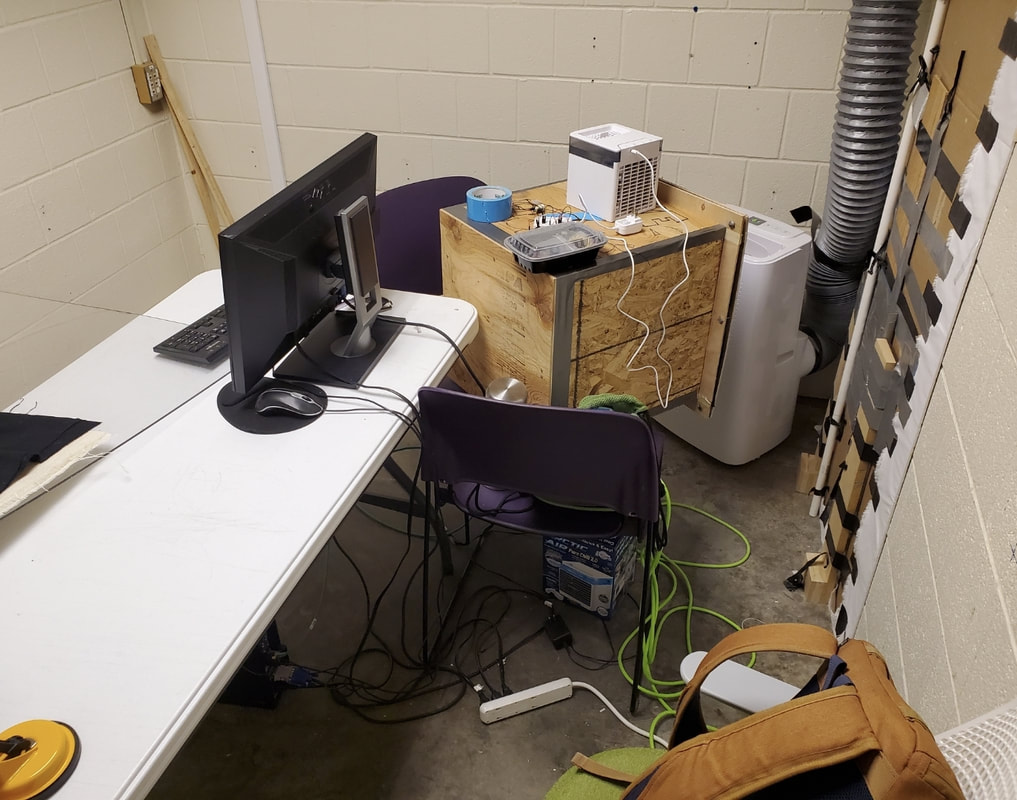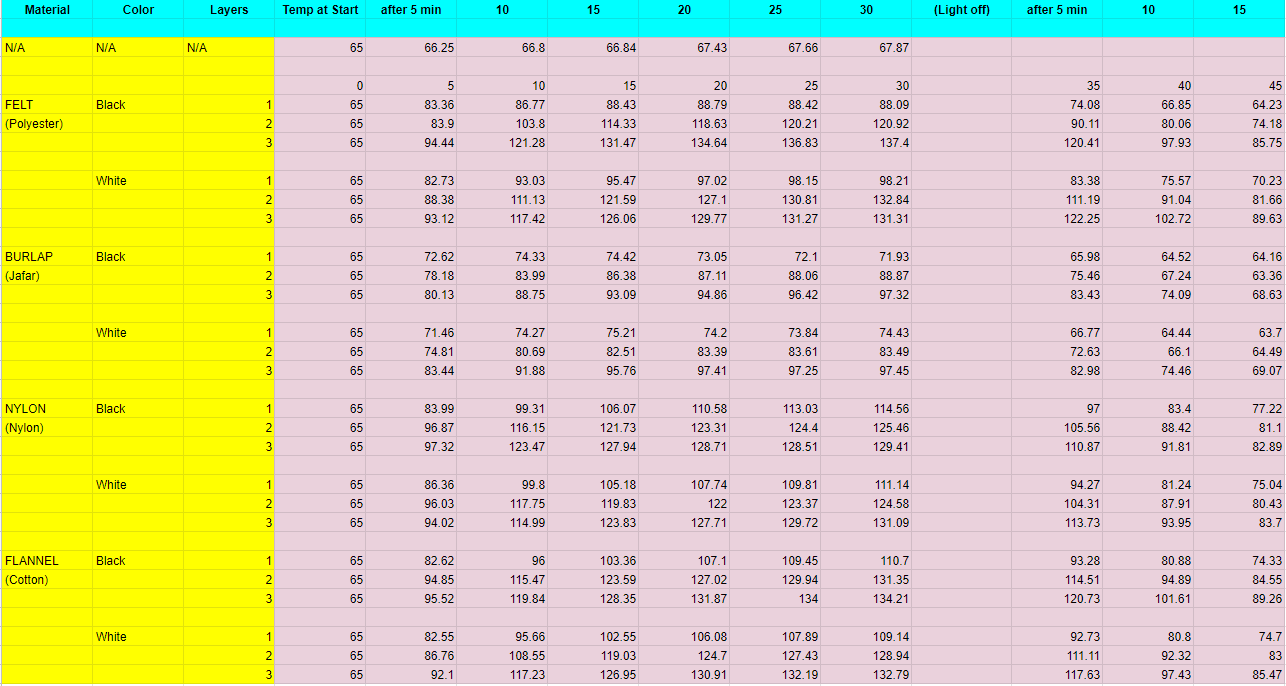METHODOLOGY
|
PRE-EXPERIMENT STEPS:
EXPERIMENT STEPS:
|
Above: Fig. 22 - Light shining through the open face of the box during a test. it's facing the opening to the AC unit, however the air current is aimed above the box instead of aimed at it.
Below: Fig. 23 - My living quarters during the 4 days I ran tests. I had to cut out human contact during these tests to keep the room at a constant temperature, so I'm still trying to re-enter society after all that solitary confinement. |
PRELIMINARY RESULTS
Fig. 24 - These are the results I got my first time attempting the experiment. I used a different setup for recording my results at the time which was less accurate and only required one sensor, so these results became quickly obsolete.


